85. Once again.
Hotu A Matua
left his
old homeland in
Hora Nui 2
which I have
guessed meant
°September 2
(245), at the
same time as
when on Easter
Island the
Explorers in
Anakena 27 =
"July 27
(208 = 245 - 37) reached
Oromanga. If
it was possible
to move in
timespace then
it should also be
possible to have
different dates
simultaneously.
... Space
and time are a single, related concept in Runasimi
[the language of the Inca people], represented by one
word, pacha, which can also mean 'world' and
'universe'. The image of time familiar to Waman
Puma was static and spatial: one could travel in
time as one travels over earth - the structure, the
geography, remaining unchanged. To him it does not
matter that he shows Inka Wayna Qhapaq,
who died in 1525, talking to Spaniards who did not
arrive until 1532. Wayna Qhapaq was the last Inca
to rule an undivided empire: he is therefore the
archetype, and it must be he who asks the Spaniards. 'Do
you eat gold?'
|
... Hotu's canoe sailed from
Maori to Te Pito O Te Kainga.
It sailed on the second day of September
(hora nui). The canoe of the king
(ariki is used here incorrectly
for tapairu 'queen'), of Ava
Rei Pua, also sailed on the other
side. They had attached the canoe of
Ava Rei Pua to the middle of the
canoe of Hotu
... |
|
Hau Epa
JULY 2 |
Hanga Moria
One
3
(184) |
Oromanga 4
(*105) |
 |
 |
 |
|
Ga4-20 (187 - 84) |
Ga4-21 (104 = 288 - 184) |
Ga4-22 |
|
11h (167.4)
χ Leonis, χ¹ Hydrae
(167.1),
χ² Hydrae
(167.3) |
AL SHARAS (Rib) = β Crateris
(168.6) |
Al Zubrah (Mane)-9 /
Purva Phalguni-11
ZOSMA (Girdle) = δ Leonis
(169.2),
COXA (Hips) = θ Leonis
(169.4) |
|
September 4 |
5 (*168 = 2 * 84) |
6 |
|
°August 31 |
°September 1 (244) |
Hora
Nui 2 (245 = 208 + 37) |
|
'August 8 (*140) |
9 |
10 (222) |
|
"July 25
(*126) |
26 |
Anakena 27 (208) |
|
NAKSHATRA DATES: |
|
JANUARY 1 (366) |
2 |
3
(*288) |
|
23h (350.0)
υ, θ
Gruis (350.0), π Cephei (350.6), ι Gruis
(350.9) |
SIMMAH = γ Piscium
(351.7) |
φ Aquarii
(352.0),
ψ Aquarii
(352.4),
χ Aquarii
(352.6), γ
Tucanae, φ Gruis (352.8) |
|
March 6 (*350) |
7 (66) |
8 (432) |
|
°March 2 (*346) |
3 |
4 (63) |
|
'February 7 |
8 (*324) |
9 (40) |
|
"January 24 |
25 (*310) |
26 |
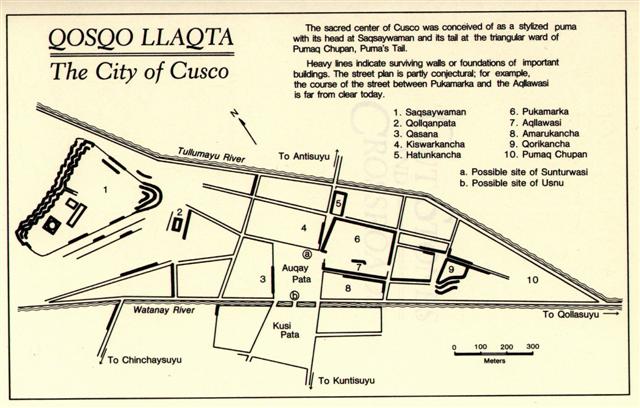
 |
|
The Fig Tree where Raven was delayed
could have referred to the place of Zosma and
Coxa (Cb6-27 respectively Ga4-22), where
the sex of Atea changed from
female to male:
...
Atea then became the wife of
Rua-tupua-nui, Source of Great
Growth, and they became the parents of
all the celestial beings, first the
shooting stars, then the Moon and the
Sun, next the comets, then the multitude
of stars and constellations, and finally
the bright and dark nebulae. When this
tremendous task had been accomplished
Atea took a third husband,
Fa'a-hotu, Make Fruitful. Then
occurred a curious event. Whether
Atea had wearied of bringing forth
offspring we are not told, but certain
it is that Atea and her husband
Fa'a-hotu exchanged sexes. Then
the eyes of Atea glanced down at
those of his wife Hotu and they
begat Ru. It was this Ru
who explored the whole earth and divided
it into north, south, east, and west
...
 |
|
Mori
Oil;
mori eoeo, pomade. Pau.: mori,
oil for burning. Mgv.: mori,
candle, taper, wax. Mq.: moi,
coconut. Ta.: mori, oil, lamp.
Churchill. Pau.: Ha-morihaga,
pious. Mgv.: morimori, to
consecrate. Ta.: moria, prayer.
Ma.: morina, to remove tabu.
Churchill. Mgv.: Moriga, a minor
festival. Ta.: moria, offering
after recovery from illness. Ma.:
morina, to remove the crop tabu.
Churchill.
Molia,
v. Haw., to devote, to give up to
good or bad, to bless or to curse,
according to the prayer of the priest,
to pray for, be sanctified, to worship,
sacrifice, to curse. 'Molia mai e ola',
to bless him, let him live; 'Molia
mai e make', curse him, let him die.
Tah., moria, name of a religious
ceremony after restoration from
sickness; mori-mori, prayer at
do. Sam., molia-molia, be
disappointed, deceived. Marqu., moi;
Fiji., moli, thanks. Sunda.,
mulija; Mal., mulieja,
dignified, illustrious. Anc. Slav.,
moliti, to pray; moliva,
prayer. Pol., modlie, to pray;
modla, prayer. Lith., malda,
prayer. Irish, molaim, to praise;
moladh, praise. Welsh, mali,
to adore; mawl, molud,
praise. A. Pictet (Orig. Ind.-Eur., ii.
701) refers the above West Aryan forms
to the 'Sanskrit mad, petere,
rogare, in Vedic (Westerz), prop.
exhilare', though Benfey (Sansk. Dict.)
says that the original meaning of mad
was 'to be wet', and that in the Vedas
it means 'to get drunk'.
...
But the time of his predestined defeat
by the dark brother,
Tezcatlipoca, was
ever approaching, and, knowing perfectly
the rhythm of his own destiny,
Quetzalcoatl
would make no move to stay it.
Tezcatlipoca,
therefore, said to his attendants, 'We
shall give him a drink to dull his
reason and show him his own face in a
mirror; then, surely, he will be lost'.
And he said to the servants of the good
king, 'Go tell your master that I have
come to show him his own flesh!' But
when the message was brought to
Quetzalcoatl,
the aging monarch said, 'What does he
call my own flesh? Go and ask!' And when
the other was admitted to his presence:
'What is this, my flesh, that you would
show me?' Tezcatlipoca
answered, 'My Lord and Priest, look now
at your flesh; know yourself; see
yourself as you are seen by others!' And
he presented the mirror. Whereupon,
seeing his own face in that mirror,
Quetzalcoatl
immediately cried out, 'How is it
possible that my subjects should look
upon me without fright? Well might they
flee from before me. For how can a man
remain among them when he is filled as I
am with foul sores, his old face
wrinkled and of an aspect so loathsome?
I shall be seen no more, I shall no
longer terrify my people'. Presented the
drink to quaff, he refused it, saying
that he was ill; but urged to taste it
from the tip of his finger, he did so
and was immediately overpowered by its
magic. He lifted the bowl and was drunk.
He sent for Quetzalpetlatl,
his sister, who dwelt on the Mountain
Nonoalco.
She came, and her brother
gave her the bowl, so that she too was
drunk. And with all reason forgotten,
the two that night neither said prayers
nor went to the bath, but sank asleep
together on the floor.
And in
the morning Quetzalcoatl
said, in shame, 'I have sinned; the
stain of my name cannot be erased. I am
not fit to rule this people. Let them
build a habitation for me deep under the
ground; let them bury my bright
treasures in the earth; let them throw
the glowing gold and shining stones into
the Precious Waters where I take my
nightly bath.
And
all this was done. The king remained
four days in his underground tomb, and
when he came forth he wept and told his
people that the time had come for his
departure to the Red Land, the Dark
Land, the Land of Fire ...
And Pictet considers the
l in the Anc. Slav. and Irish and
Welsh as an exchange for an original
d or dl as preserved in the
Polish. We have no remains of Ancient
Polish with which to compare the Ancient
Slave or the Irish and Welsh; and I
think, therefore, that the Polynesian
offers a simpler and a better reference.
In Haug's 'Essays on the Sacred Songs of
the Parsis', p. 175, n. 2, he states
that 'for blessing and cursing one and
the same word is used' in the Avesta -
âfrênâmî - which thus
corresponded to the old Hebrew word
berek, 'to give a blessing and to
curse'. It strengthens the West Aryan
connections shown above of the
Polynesian molia to find that the
ancient Iranians also used a word
expressing the same double sense.
(Fornander) |
|
One
One,
sand. Oneone (reduplication of
oone which see below), dirty,
covered in soil, in mud. Vanaga. Oone,
ground, soil; mud; dirty, to get dirty.
Vanaga. One, sword. (Cf. oe,
dorsal fin; àè, sword.) Ta.:
óé, sword, lance. Churchill. Oone,
sand, clay, dirt, soil, mire, mud, muck,
gravel, filth, manure, dust, to dirty;
ao oone, shovel; egu oone
vehuvehu, mud; moo te oone,
shovel; oone hekaheka, mud;
puo ei oone, to daub; kerihaga
oone, husbandman; oone veriveri,
mud; oone no, muck, to dirty, to
powder; vai oone, roiled water;
oone rari, marsh, swamp; oonea,
dirty T; ooneoone, sandy;
oonevai, clay T; hakaoone, to
pollute, to soil. P Mgv.: one,
land in general, earth, soil. Mq.:
one, sand, beach. Ta.: one,
sand, dust, gravel. Churchill.
Miro-oone, model boat made of earth
in which the 'boat festivals' used to be
celebrated. Vanaga.
... on the first day of the year the
natives dress in navy uniforms and
performs exercises which imitate the
maneuvers of ships' crews ... Métraux. |
The Explorers
had one frame of
time and the
King another.
However, the
star distance
from χ Leonis
(together with
χ¹ and χ²
Hydrae) to
Antares was the
same, viz. 187 -
103 = 84 as in
the number for
the Julian
equinox. And 4
* 20 = 80 as in
the day number
for the Gregorian
equinox and for
0h:
|
JULY 2 (183) |
266 - 183 =
83 |
SEPTEMBER 24 (267 = 183 + 84) |
 |
 |
|
Ga4-20 (187 - 84) |
Ga7-18 (187) |
|
χ Leonis (*167) |
(*251 = *167 + 84) |
|
CLOSE TO THE FULL MOON: |
|
23h
(350.0 = *167 +
*183) |
433
- 350 = 83 |
ALDEBARAN
(*434 = *366 + *68) |
|
JANUARY 1 (366) |
449 - 366 = 83 |
MARCH 25 (450 = 366 + 84) |
Probably the idea was to apply the
northern calendar structure also for the situation south of
the equator. Once upon a time Aldebaran would have risen
with the Sun at the Julian day for spring equinox, and also south of the equator spring
equinox should then have come after 84 days. At the time of Hyadum II the
date for χ Leonis at the Full Moon would have been
JANUARY 1 and at that ancient time Hotu A Matua
should have left
his old homeland when the Full Moon was 288 (= 2 *
144) days after 0h
(viz. in day 185 = 370 / 2, in JULY 4).
At the time of Gregory XIII, 64 - 4 =
60 precessional
days later, the
Full Moon had
been at χ
Aquarii 288 + 60 =
348 (= 12 * 29) days after
0h (a number
which coincides
with the number
of glyphs on
side b on the C
tablet).
|
Egyptian sticks |
 |
Phoenician
taw |
 |
Greek chi |
Χ (χ) |
|
Greek tau |
Τ (τ) |
|
In
Plato's Timaeus, it is explained
that the two bands that form the soul of
the world cross each other like the
letter Χ.

Chi
or X is often used to abbreviate the
name Christ, as in the holiday Christmas
(Xmas). When fused within a single
typespace with the Greek letter Rho,
it is called the labarum and used to
represent the person of Jesus Christ.
(Wikipedia)

...
tau is the 19th letter of the Greek
alphabet. In the system of Greek
numerals it has a value of 300 ...
Taw is believed to be derived from
the Egyptian hieroglyph meaning 'mark'
...
Taw,
Tav or Taf is the
twenty-second and last letter in many
Semitic abjads ... In gematria Tav
represents the number 400, the largest
single number that can be represented
without using the Sophit forms ...
'From
Aleph to Taf' describes
something from beginning to end; the
Hebrew equivalent of the English 'From A
to Z' ...
Tav
is the last letter of the Hebrew word
emet, which means truth. The midrash
explains that emet is made up of
the first, middle, and last letters of
the Hebrew alphabet (Aleph,
Mem, and Tav...).
Sheqer (falsehood), on the other
hand, is made up of the 19th, 20th, and
21st (and penultimate) letters.
Thus,
truth is all-encompassing, while
falsehood is narrow and deceiving. In
Jewish mythology it was the word emet
that was carved into the head of the
Golem which ultimately gave it life.
But when the letter 'aleph' was erased
from the Golem's forehead, what
was left was 'met' - dead. And so
the Golem died ... (Wikipedia)

|
They had
attached the canoe of Ava Rei Pua to the
middle of the canoe of Hotu
- this we can imagine
from the design of Ga4-20:

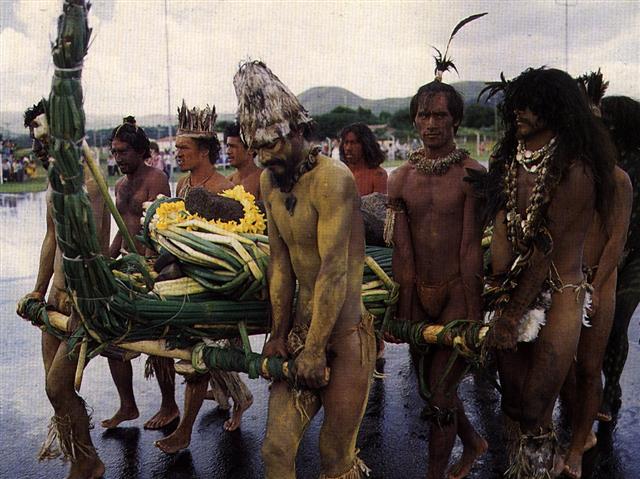
... low down among the other stones in the wall of
Ahu Naunau in Anakena
[they] found
a crowned head broken off at the neck, and clearly
it was from a stone statue which headless earlier
had been brought to Norway. For the Easter Islanders
the immediate response to the new discovery was
La Reina! - it just had to be their ancient
queen Avareipua.
Old people cried emotionally
...
The Egyptian X
had Sirius at
its center, but
with Sirius
moving hand in
hand with the
precession of
the Sun we
should count 64
days ahead from
June 30 (*101)
in order to
arrive close to χ
Leonis, where
Sirius would
have been at the
time of Hyadum
II. Or to be more
precise: *101 +
64 = *165
(Alkes) and June
30 (181) + 64 =
181 (JUNE 30):
|
ST JOHN'S DAY |
|
JUNE 25 |
26 (177) |
27 |
 |
 |
 |
 |
|
Ga4-12 (95) |
Ga4-13 |
Ga4-14 |
Ga4-15 |
|
p Carinae
(159.3) |
φ Hydrae
(160.3) |
no star listed (161) |
VATHORZ POSTERIOR = θ Carinae
(162.1),
PEREGRINI = μ Velorum,
η Carinae (162.6) |
|
August 27 |
28 (240) |
29 (*161) |
30 |
|
°August 23 |
24 (236) |
25 (*157) |
26 |
|
'July 31 |
'August 1 |
2 (214) |
3 (*500) |
|
"July 17
One
Tea |
Anakena 18
Poike |
19 (200)
Pua
Katiki |
20 (*121)
Maunga Teatea |
|
HANGA TAKAURE |
HANGA HOONU |
|
NAKSHATRA DATES: |
|
CHRISTMAS EVE |
|
DECEMBER 25 |
26 (360) |
27 |
|
η Aquarii
(342.1), σ Gruis (340.4),
SITULA = κ Aquarii
(342.7) |
ε
Piscis Austrini (343.5), ο
Pegasi, β Gruis (343.8) |
ρ
Gruis (344.0),
MATAR
(Rain) = η Pegasi
(344.2), η Gruis (344.6), β Oct.
(344.7) |
λ
Pegasi (345.0), ξ Pegasi
(345.1), ε Gruis (345.3), τ
Aquarii (345.7), ξ Oct. (345.8),
μ Pegasi (345.9) |
|
February 26 |
27 (58) |
28 (424) |
March 1 (*345) |
|
°February 22 |
TERMINALIA |
24 (55) |
25 |
|
'January 30 (*315) |
31 |
'February 1 (32) |
2 |
|
"January 16 (*301) |
17 |
18 (383) |
19 |
|
On the eighteenth day of the
month of July ('Anakena')
they went on from Hanga
Takaure. |
 |
|
JUNE 28 |
29 (180 = 244 - 64) |
|
SIRIUS |
JULY 1 (*102) |
 |
 |
 |
 |
|
Ga4-16 |
Ga4-17 (100 = 180 - 80) |
Ga4-18 (101 = *165 - 64) |
Ga4-19 |
|
ν Hydrae (163.1) |
no star listed (164) |
Wings-27
η Oct. (165.4),
ALKES = α Crateris
(165.6) |
ANA-TIPU-4
(Upper-side-pillar - where
the guards stood)
MERAK = β Ursae Majoris
(166.2),
DUBHE = α Ursae Majoris
(166.7) |
|
August 31 |
September 1 (*164) |
2 |
3 (246) |
|
°August 27 |
28 |
29 (*161) |
30 (242) |
|
'August 4 (216) |
5 (*137) |
6 |
7 |
|
"July 21
Mahatua |
22 / 7
Taharoa |
Anakena 23 (204)
RANGI MEAMEA |
24 (*125)
Peke Tau O Hiti
OROMANGA |
|
HANGA HOONU |
|
NAKSHATRA DATES: |
|
DECEMBER 28 |
29 |
|
30 (364) |
31 (*285) |
|
ι Cephei (346.0), λ Aquarii,
γ Piscis Austrini, σ Pegasi
(346.5) |
SCHEAT
AQUARII
=
δ Aquarii
(347.0), ρ Pegasi (347.2), δ
Piscis Austrini (347.4),
FOMALHAUT = α Piscis
Austrini,
τ Gruis (347.8) |
FUM AL SAMAKAH = β Piscium
(348.3), ζ Gruis (348.5),
ο Andromedae
(348.9) |
Al Fargh al Mukdim-24 /
Purva Bhādrapadā-26 /
House-13
SCHEAT
PEGASI
= β Pegasi,
π Piscis Austrini (349.3), κ
Gruis (349.4),
MARKAB PEGASI = α Pegasi
(349.5) |
|
March 2 |
3 |
4 (*348) |
5 (64) |
|
°February 26 |
27 |
28 (*344) |
°March 1 (60) |
|
'February 3 |
4 |
5 (*321) |
6 (37) |
|
"January 20 |
21 |
22 |
23 (388) |
|
... Strassmeier and Epping,
in their Astronomishes
aus Babylon, say that
there its stars formed the
third of the twenty-eight
ecliptic constellations, -
Arku-sha-rishu-ku,
literally the Back of the
Head of Ku, - which had been
established along that great
circle milleniums before our
era; and Lenormant quotes,
as an individual title from
cuneiform inscriptions,
Dil-kar, the Proclaimer
of Dawn, that Jensen reads
As-kar, and others
Dil-gan, the Messenger
of Light.
George Smith inferred from
the tablets that it might be
the Star of the Flocks;
while other Euphratean names
have been Lu-lim,
or Lu-nit, the Ram's
Eye; and Si-mal or
Si-mul, the Horn star,
which came down even to late
astrology as the Ram's
Horn.
It also was Anuv, and
had its constellation's
titles I-ku and
I-ku-u, - by
abbreviation Ku, -
the Prince, or the Leading
One, the Ram that led the
heavenly flock, some of íts
titles at a different date
being applied to Capella of
Auriga.
Brown associates it with
Aloros, the first of the ten
mythical kings of Akkad
anterior to the Deluge, the
duration of whose reigns
proportionately coincided
with the distances apart of
the ten chief ecliptic stars
beginning with Hamal, and he
deduces from this kingly
title the Assyrian Ailuv,
and hence the Hebrew Ayil;
the other stars
corresponding to the other
mythical kings being
Alcyone, Aldebaran, Pollux,
Regulus, Spica, Antares,
Algenib, Deneb Algedi, and
Scheat
... |
|
They climbed
uphill, went on, and reached
Poike. When they
arrived, they looked around
and named (the place)
Poike A Hau Maka. They
climbed up farther to Pua
Katiki. When they
arrived there, they looked
around and named (the place)
Pua Katiki A Hau Maka.
They came down from the
height, from the mountain,
from Pua Katiki, and
reached Maunga Teatea.
They looked around and gave
the name Maunga Teatea A
Hau Maka. They all
descended, they all came
down from Pua Katiki.
They reached Mahatua,
saw it, looked around, and
gave the name Mahatua A
Hau Maka. Then they went
on and came to Taharoa.
They saw it, looked around,
and gave the name Taharoa
A Hau Maka. Again they
went on and reached Hanga
Hoonu. They saw it,
looked around, and gave the
name Hanga Hoonu A Hau
Maka ... They remained
in Hanga Hoonu for
five days. On the
twenty-third day of the
month of July ('Anakena'),
they reached Rangi Meamea.
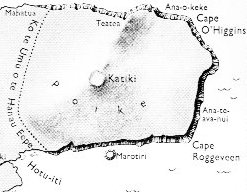
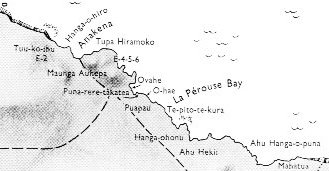 |
But at the time of rongorongo the date Hora Nui 2
in the Gregorian calendar would have moved ahead with 4 precessional days from
the time of the Pope, from *165 (Alkes) to Zosma and Coxa (*169).
This was therefore the star place which should properly have been aligned
with °September 6 (249) - if the 'crooked canoe' of
the Pope had been corrected already in 1582 A.D.
instead of by the precession since that time.
... When
the Pope rearranged the day for spring equinox from
number 84 ('March 25) to number 80 (ºMarch 21) the
earlier Julian structure was buried, was covered up (puo).
At the same time the Pope deliberately avoided to
correct the flow of Julian calendar days for what he may
have regarded as 4 unneccesary leap days prior to the
Council of Nicaea. Thus his balance sheet for days was
in order. The day numbers counted from the equinox were
increased with 4 and this was equal to allowing the 4
'unneccessary' leap days to remain in place. But he had
moved spring equinox to a position which was 4 days too
early compared to the ancient model
...
When looking at the heliacal side
with Sirius and Antares instead of at the Full Moon
with Aldebaran there is no similar problem:
|
SIRIUS
(*101)
JUNE 30 (181 = 101 + 80 |
184 - 101 =
83 |
EQUINOX
(*185)
SEPTEMBER 22 (265 = 185 + 80) |
 |
 |
|
Ga4-18 (101 = *165 - 64) |
Ga7-16 (185 = *249 - 64) |
|
ALKES
(*165)
September 2 (245 = 165 + 80) |
ANTARES
(*249)
November 25 (329 = 245 + 84) |
|
CLOSE TO THE FULL MOON: |
|
FUM AL SAMAKAH
(*348) |
431
- 348 = 83 |
(*66 = *249 - 183) |
|
DECEMBER
30 (364 = 181 + 183) |
447 - 364 = 83 |
MARCH 23 (*2 = *185 - 183) |
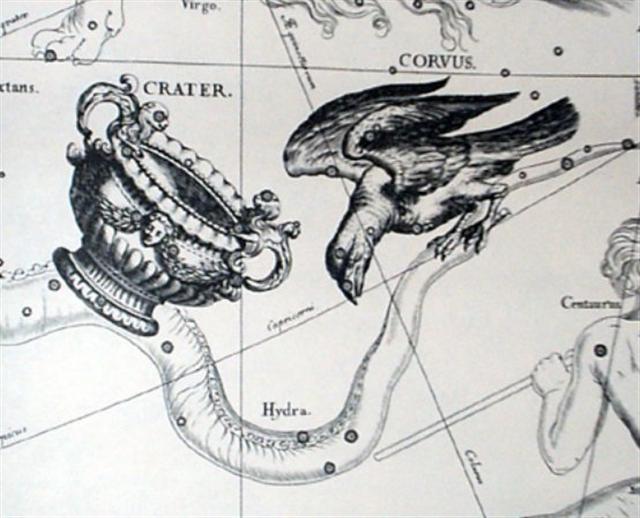
The right ascension day for Antares
was *249 at the time of rongorongo. 249 (September
6, Zosma and Coxa) + 80 = 329 (November 25, Antares):
|
INVISIBLY CLOSE TO THE SUN (helical
dates): |
|
SEPTEMBER 20 |
21 (*184) |
EQUINOX |
23 |
24 |
25 (268) |
 |
 |
 |
 |
 |
 |
|
Ga7-14 (183) |
Ga7-15 |
Ga7-16 |
Ga7-17 |
Ga7-18 |
Ga7-19 |
| |
|
ANTARES (*249) |
|
|
|
|
November 23 |
24 |
25 (329) |
26 (*250) |
27 |
28 |
|
°November 19 |
20 |
21 (325 = 314 + 11) |
22 |
23 |
24 (*248) |
|
19 - 11 = 8 |
9 November |
(314
= 288 + 26) |
11 |
12
(*236 = 4 * 59) |
13 |
|
'October 27 (300) |
28 |
29 (*222) |
30 |
31 (= 17 + 14) |
'November 1 |
|
"October 13 |
14 |
Tagaroa Uri 15 (288) |
16 |
17
(290 = 331 - 41) |
18 |
|
... The canoes of Ava Rei Pua and
of Hotu were seen near the
(off-shore) islets. On the fifteenth day
of the month of October (tangaroa
uri) the canoe of Hotu and
the canoe of Ava Rei Pua landed.
On the fifteenth day of the month of
October (tangaroa uri),
Nonoma left the house during the
night to urinate outside.

At this point
Ira called out to Nonoma,
'Look at the canoe!' Nonoma ran,
he quickly went to Te Hikinga Heru
(a ravine in the side of the crater
Rano Kau) and looked around. There
he saw the double canoe way out near the
(offshore) islets, and the two (hulls of
the canoe) were lashed together. He ran
and returned to the front of the house.
He arrived and called into the house:
'Hey you! This canoe has arrived during
the night without our noticing it!'
Ira asked Nonoma, 'Where is
the canoe, which you say is lying out
there (in the water)?' Nonoma's
voice came back: 'It is out there (in
the water) close to the (offshore)
islets! There it lies, and the two
(hulls) are lashed together.' The four
of them (corrected for 'the six of
them') went out and picked up leaves (on
branches) to give signals. They picked
them up, went and arrived at Te
Hikinga and saw the canoe.
Raparenga got up, picked up the
leaves, took them in his hands, and
waved, waved, waved, waved
... (E:75) |
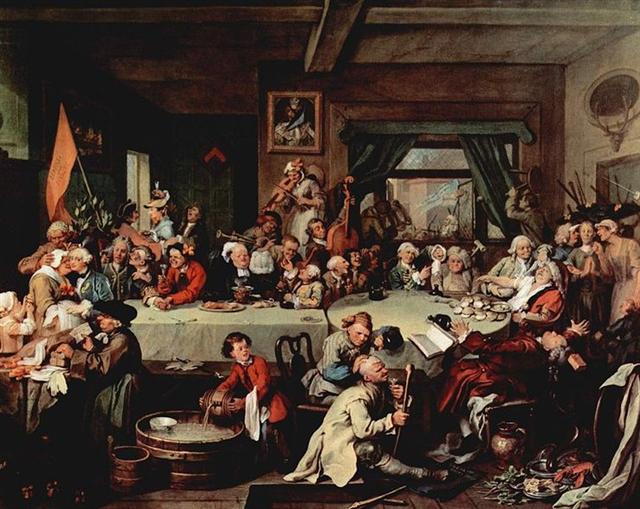
... The reform was
adopted initially by the Catholic
countries of Europe. Protestants and
Eastern Orthodox countries continued to
use the traditional Julian calendar and
adopted the Gregorian reform after a
time, for the sake of convenience in
international trade. The last European
country to adopt the reform was Greece,
as late as 1923 ... Britain and the
British Empire (including the eastern
part of what is now the United States)
adopted the Gregorian calendar in 1752
... Claims that rioters demanded 'Give
us our eleven days' grew out of a
misinterpretation of a painting by
William Hogarth ... |
There was reason for the riot.
The conjunction between Sirius (the cause of
rising water) and the empty dry Alkes, together
with the Fish
who was half dead from lack of water, had been pushed
aside and 4 days (not 11) were lost:

... Aquarius is identified as
GU.LA
'The Great One' in the Babylonian star
catalogues and represents the god Ea
himself, who is commonly depicted holding an
overflowing vase. The Babylonian star-figure
appears on entitlement stones and cylinder seals
from the second millennium. It contained the
winter solstice in the Early Bronze Age. In Old
Babylonian astronomy, Ea was the ruler of
the southernmost quarter of the Sun's path, the
'Way of Ea', corresponding to the period
of 45 days on either side of winter solstice. In
the Greek tradition, the constellation became
represented as simply a single vase from which a
stream poured down to Piscis Austrinus.
The name in the Hindu zodiac is likewise
kumbha 'water-pitcher' ...
|
SIRIUS
(*101)
JUNE 30 (181 = 101 + 80) |
3 |
DAY 185
(= 370 / 2)
JULY
4 |
79 |
EQUINOX
(*185)
SEPTEMBER 22 (265 = 185 + 80) |
 |
 |
 |
|
Ga4-18 (101 = *165 - 64) |
Ga4-22 (105) |
Ga7-16 (185 = *249 - 64) |
|
ALKES
(*165)
September 2 (245 = 165 + 80) |
ZOSMA & COXA
(*169)
September
6 (249 = 169 + 80) |
ANTARES
(*249)
November 25 (329 = 249 + 80) |
|
CLOSE TO THE FULL MOON: |
|
FUM AL SAMAKAH
(*348) |
3 |
χ Aquarii
(*352) |
79 |
(*66 = *249 - 183) |
|
DECEMBER
30 (364 = 181 + 183) |
JANUARY 3
(*288 = *352 - 64) |
MARCH 23 (*2 = *185 - 183) |
|
... Robur Carolinum,
Charles' Oak, the
Quercia of Italy and the
Karlseiche of
Germany, was formally
published by Halley in 1679
in commemoration of the
Royal Oak of his patron,
Charles II, in which the
king had lain hidden for
twenty-four hours after his
defeat by Cromwell in the
battle of Worcester, on the
3rd of September 1651
...
288 was also the day number
the Pope Gregory XIII had
decided on for launching his
new calendar:
... The Julian calendar day
Thursday, 4 October 1582 was
followed by the first day of
the Gregorian calendar,
Friday, 15 October 1582 (the
cycle of weekdays was not
affected)
...
At the
time of rongorongo - after
the precession had corrected
his mistake - day 288 had
become the proper place for
Antares to rise with the
Sun. Tangaroa Uri 15
("October 15) was when the
Royal Double Canoe was
reaching Easter Island:
... The canoes of Ava Rei Pua and
of Hotu were seen near the
(off-shore) islets. On the fifteenth day
of the month of October (tangaroa
uri) the canoe of Hotu and
the canoe of Ava Rei Pua landed.
On the fifteenth day of the month of
October (tangaroa uri),
Nonoma left the house during the
night to urinate outside ... |
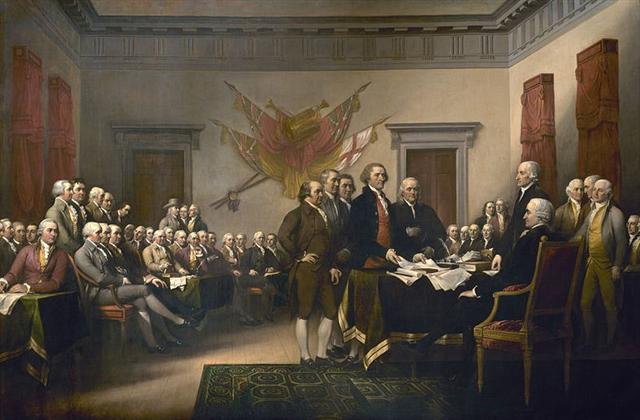
|

























